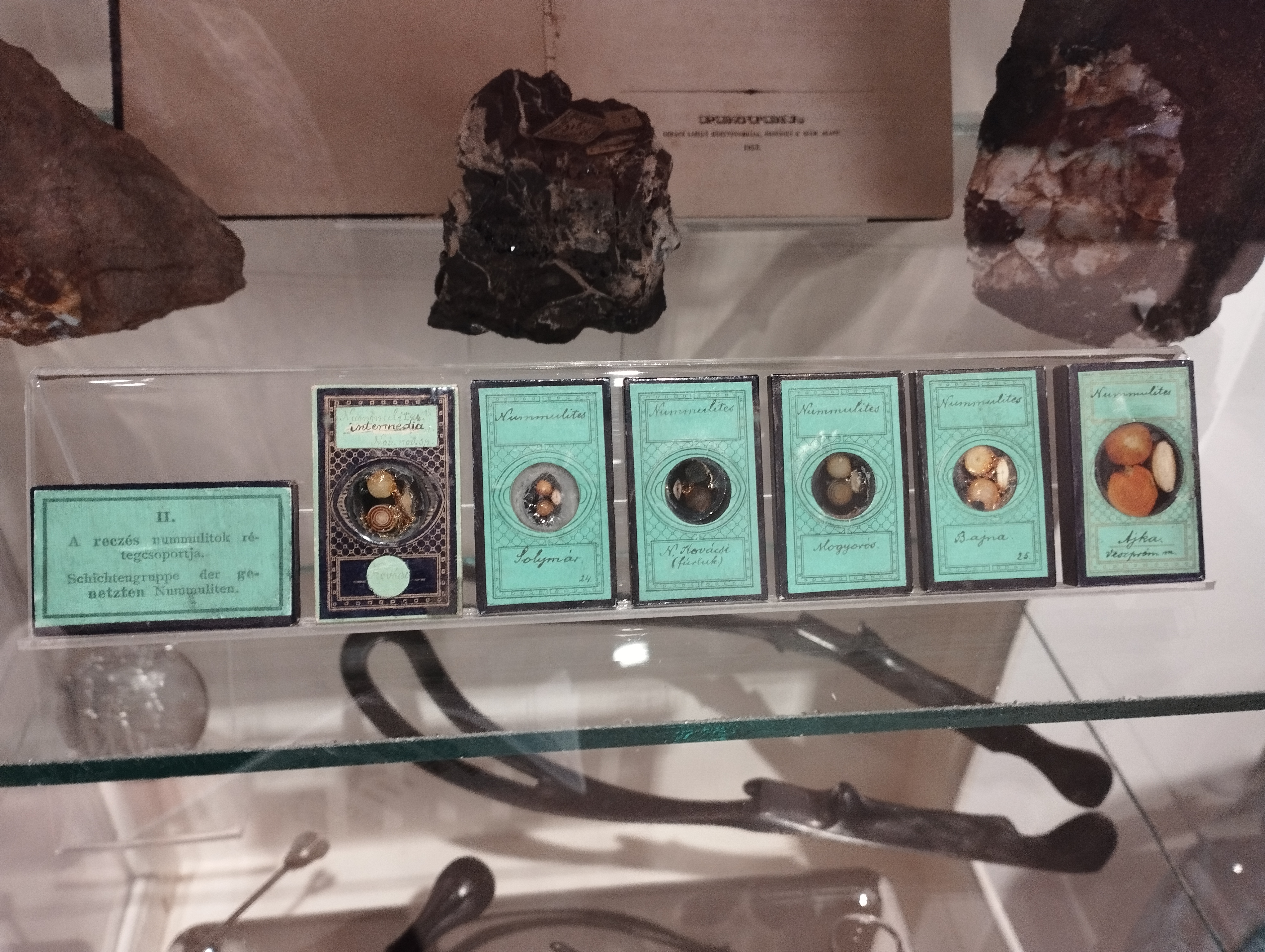Several valuable objects of ELTE can be viewed in the temporary exhibition entitled Magyar EXPO successes 1851-2021.
In 1898 Loránd Eötvös made two copies of the torsion balance which are known today as the ”Paris balance” and the ”Balaton balance”; they are distinguished on the bases of the locations they were used mostly. The balance owned by the ELTE Department of Materials Physics (on the left side of the photo) won a gold medal in Paris in 1900, so it was given a special place in the exhibition showing Hungarian successes achieved at world’s fairs. Next to it, the Eötvös-Rybár balance (E 54) can be seen: its development was carried out by István Rybár, a former colleague of Eötvös Loránd, also at the university, and the invention received the grand prize at the Brussels World’s Fair held in 1958. The various types of Eötvös balances made a significant contribution to the exploration of oil and natural gas fields worldwide in the 20th century. Thus, several copies of the type marked E 54 have already been made, the object for the exhibition was provided by the Hungarian Museum of Technology and Transport.
From the material of the Eötvös Museum of ELTE, nummulites from the collection of Miksa Hantken were presented. These won a medal of merit at the world’s fair held in Vienna in 1873. Mining engineer Miksa Hantken was the first head of the Institute of Paleontology, founded in 1882, and donated his paleontological objects from his field collections to the university.

